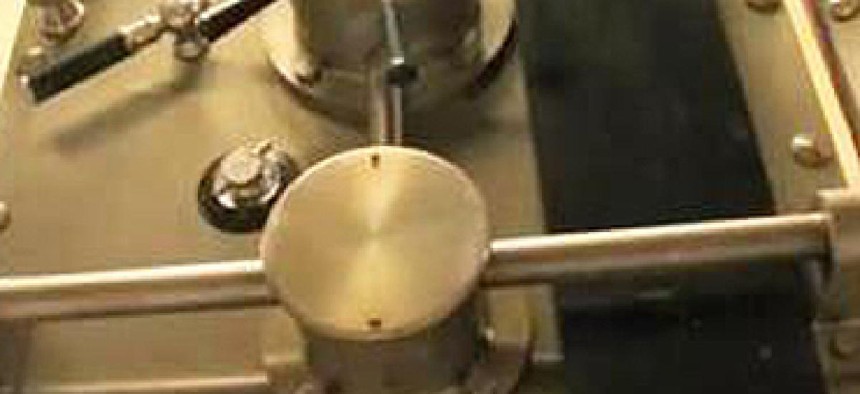A piece of Cold War history opens to the public

National lab declassifies 'Tunnel Vault,' which stored nuclear material after WWII.

The entrance to "Tunnel Vault" at the Las Alamos National Laboratory. (LANL photo)
Civilians can now get a glimpse of what the term 'critical infrastructure protection' meant during the Cold War, as Los Alamos National Laboratory throws open the thick steel doors of one of its most secret Cold War-era nuclear research and material storage tunnels to public tours.
The tunnel, situated in a remote canyon on the lab's 23,680 acres in northern New Mexico, is set more than 200 feet back into the escarpment's stone wall, according to building historian Ellen McGee. Los Alamos National Laboratories said the "Tunnel Vault" was once one of the most secret and secure locations in the U.S. and is the original post-World War II nuclear stockpile storage area.
Located in research facility's Technical Area 41, the Tunnel Vault was built in 1948 and 1949, according to the lab and is set behind a formidable security perimeter that includes a hardened guard tower equipped with gun ports and bulletproof glass. Beyond that, a series of gates and doors lead to a 230-foot long concrete tunnel that goes straight into the canyon wall to the vault's rooms.
At the end of the tunnel is a large alcove room with a single bank-vault door. Through that door is a vault built inside a vault with five storage areas, all protected with identical bank-vault doors.
Although the laboratory was home to the World War II-era Manhattan Project that produced the two nuclear bombs dropped on Japan, the post-war tunnel was used only to store nuclear material and conduct research. Its depth and surrounding rock served as an effective radiation shield.
The facility, said a Los Alamos spokesman, had been used as late as 2012 for a variety of purposes. It had been a classified museum since 2004, storing historical objects and materials from the labs. Nuclear research and development activities, however, ended in 2000, following the historic 48,000 acre Cerro Grande wildfire that destroyed or damaged some structures at the laboratories. The fire burned off vegetation above the canyon, creating a flash flood danger from storm runoff, the spokesman said. That flooding danger hastened the vault's retirement.
Tours of the vault are part of the Los Alamos National Laboratory's 70th anniversary "Signature Week" celebrations the week of July 22.
NEXT STORY: NIST updates digital signature standard





